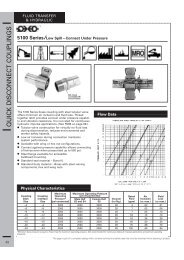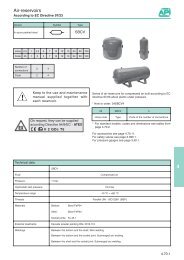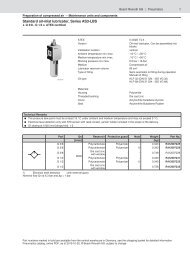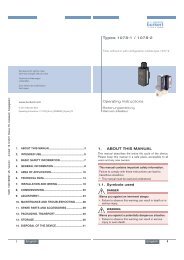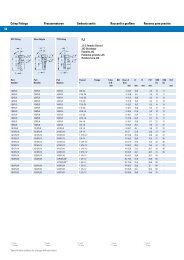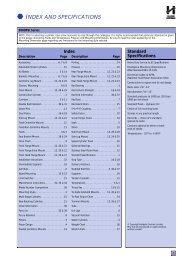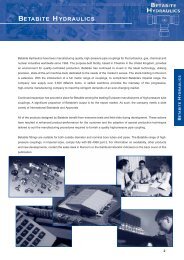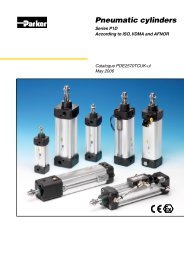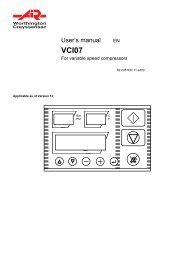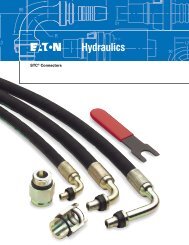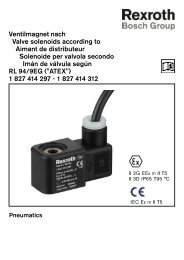P1V-M Robust Air Motors - Duncan Rogers
P1V-M Robust Air Motors - Duncan Rogers
P1V-M Robust Air Motors - Duncan Rogers
Create successful ePaper yourself
Turn your PDF publications into a flip-book with our unique Google optimized e-Paper software.
<strong>Robust</strong> air motors<strong>P1V</strong>-MMoving a component over a base, with friction betweenthemMoving a carriage over rails, with kinetic resistancebetween themF nF nFFF totaltaammF kinetic resistanceF frictionFF accaccThe force required to move the component consists of two partsThe force required to move the component consists of two parts - a kinetic resistance to move the component over the base, and- a frictional force to move the component over the base, and an an acceleration forceacceleration forceF tot = F kinetic resistance + F accF tot = F friction + F accF acc = m x aF tot = F friction + m x aF tot = the total force required in order to move the object in NF friction = frictional force in N (either F static or F kinetic depending onwhich is the greater force)F acc = acceleration force in Nm = mass in kga = acceleration in m/s 2F acc = m x aF tot = F kinetic resistance + m x aF tot = the total force required in order to move the object in NF kinetic resistance = total kinetic resistance in NF acc = acceleration force in Nm = mass in kga = acceleration in m/s 2A steel component weighing 500 kg is to be pulled over a drysteel plate with an acceleration of 0,1 m/s 2. What is the total forcerequired to produce this movement?A carriage weighing 2500 kg is to be pulled over steel rails withan acceleration of 0,2 m/s 2. What is the total force required toproduce this movement?F tot = F kinetic resistance + F accF tot = F kinetic + F accF tot = F kinetic + m x aF tot = Fn x u + m x aF tot = 500 x 9,81 x 0,15 + 500 x 0,1F tot = 735,75 + 50F tot = 785,75 NAnswer: A force of 780 N is required to produce this movement.F tot = u F x F N + m x aF tot = 0,0030 x 2500 x 9,81 + 2500 x 0,2F tot = 6,1 + 500F tot = 506 NAnswer: A force of 510 N is required to produce this movement.In practiceThese calculations only produce values as they would be underoptimum conditions. There must be no inclines in either direction.In applications using carriages, the rails must be perfectlyflat without any inclines, the wheels must be perfectly round andthere must be nothing on the rails (grains of sand, etc.). Theremust also be no effects from wind, etc.In addition, there is always uncertainty with regard to thecompressed air supply. How can we guarantee a pressure of6 bar to the inlet port of the air motor?Tip: calculate the required theoretical values for the air motorand assume a safety factor of 10 for the frictional force or kineticresistance, and add this to the acceleration force. If the motorproves to be too powerful in practice, the supply air can alwaysbe regulated by throttling or pressure regulation. If you select amotor that is not powerful enough, on the other hand, the onlyoption is to replace it.24Parker Hannifin CorporationPneumatic Division - Europe



